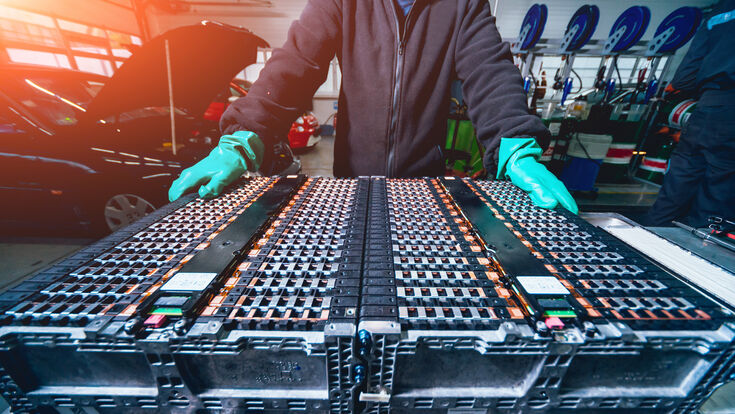1. Principle of ultrasonic welding
Ultrasonic welding uses high-frequency vibration waves to transmit to the surfaces of two objects to be welded. Under pressure, the surfaces of the two objects are rubbed against each other to form fusion between the molecular layers.
Ultrasonic welding is the conversion of 50/60 Hz current into 15, 20, 30 or 40 KHz electrical energy by means of an ultrasonic generator. The converted high-frequency electrical energy is converted into mechanical motion of the same frequency again by the transducer, and then the mechanical motion is transmitted to the welding head through a set of horn devices that can change the amplitude. The welding head transfers the received vibration energy to the joint of the workpiece to be welded, in this area, the vibration energy is converted into heat energy by friction, and the area of the parts to be welded is melted. Ultrasound can be used not only to weld metals, hard thermoplastics, but also to process fabrics and films.
1) Principle of ultrasonic metal welding
The principle of ultrasonic metal welding is a special method of using the mechanical vibration energy of ultrasonic frequency (over 16KHz) to connect the same metal or dissimilar metal. When the metal is ultrasonically welded, it neither transmits current to the workpiece nor applies a high temperature heat source to the workpiece, but under static pressure, the vibration energy of the frame is converted into friction work, deformation energy and limited temperature rise between the workpieces. The metallurgical bond between the joints is a solid-state welding realized without the base metal melting. Therefore, it effectively overcomes the phenomenon of spatter and oxidation during resistance welding. Ultrasonic metal welding machine can perform single-point welding, multi-point welding and short-strip welding of copper, silver, aluminum, nickel and other non-ferrous metal filaments or sheet materials. It can be widely used in the welding of thyristor leads, fuse pieces, electrical leads, lithium battery pole pieces and tabs.
In lithium battery technology, there are three metal welding methods involved: copper/aluminum foil to tab (foil to tab), tab to tab, tab to bus. Among them, copper/aluminum foil is the most difficult to solder to the tabs. Because the two ends of the metal welding use metals of different thicknesses and materials, one end (tab) is relatively thick (eg 0.2mm), and the other end is composed of multiple layers of extremely thin metal sheets. The figure below shows a cross-sectional view of a lithium-ion battery cell.
Among them, the welding of the foil to the tab is to connect all the cathode and anode foils inside the battery to the corresponding tab, so as to transfer the internal energy of the battery to the outside. Hundreds of lithium battery cells make up a typical lithium battery pack. The battery cells are combined in series or in parallel. If one connection fails, the output of the entire battery pack will fail. Therefore, a robust and firm connection is crucial.
The connection of the above-mentioned multilayer foils to the tabs is by ultrasonic metal welding (UMW). The process is shown in the figure below. UMW is ideal for welding between dissimilar metallic materials such as copper, aluminum and nickel. The two metal parts are pressed together by pressure and vibrate relatively with ultrasonic high frequency (usually 20Khz-40Khz). The heat generated by friction can eliminate oxides and contaminants on the metal surface, and at the same time, the two form a “smooth” metal surface. At this point, under the right pressure and heat, a weld is formed between the two.
2) Principle of ultrasonic plastic welding
When the ultrasonic wave acts on the thermoplastic plastic contact surface, it will generate high-frequency vibration of tens of thousands of times per second. This high-frequency vibration reaches a certain amplitude, and the ultrasonic energy is transmitted to the welding area through the upper weldment. Since the welding area is two The acoustic resistance at the welded interface is large, so localized high temperature will be generated. In addition, due to the poor thermal conductivity of the plastic, it cannot be distributed in time and gathers in the welding area, causing the contact surface of the two plastics to melt rapidly. When the ultrasonic wave stops working, let the pressure continue for a few seconds to make it solidify and form, thus forming a strong molecular chain to achieve the purpose of welding, and the welding strength can be close to the strength of the raw materials. The quality of ultrasonic plastic welding depends on three factors: the amplitude of the transducer welding head, the applied pressure and the welding time. The welding time and the welding head pressure can be adjusted, and the amplitude is determined by the transducer and the horn. The interaction of these three quantities has an appropriate value. When the energy exceeds the appropriate value, the melting amount of the plastic will be large, and the welding object will be easily deformed; if the energy is small, it will not be easy to weld firmly, and the applied pressure should not be too large. This optimum pressure is the product of the edge length of the welded part and the optimum pressure per 1mm of the edge.

